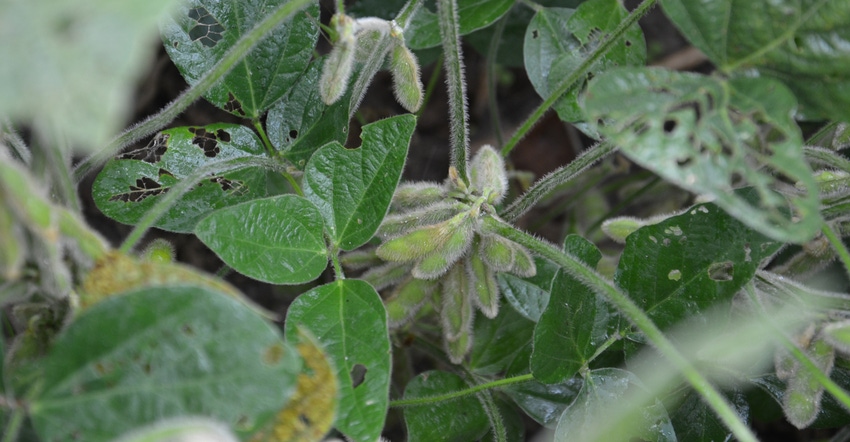
“If you want it to rain, have a soils judging contest!” That’s what one FFA advisor said while standing in a light rain on a Hancock County, Ind., farm in early October, watching his students and about 80 others compete in soils judging. The irony was it hadn’t rained at that location in any appreciable amount for nearly two months. As it turned out, it stopped soon after the contest, but measurable rain did fall over parts of Indiana elsewhere that day and the next day.
By then, many early soybeans were already harvested. And most beans that were left, except for a few double-crop fields, were in various stages, from turning yellow to waiting to be cut. The rain that came the first week of October would have been welcome in mid- and late August, and even early September in many areas.
Steve Gauck, sales agronomist for Beck’s, based near Greensburg, Ind., says yields reported to him early in the season were all over the board. Some were better than expected, some were not. Yields on the high side tended to come from areas that received timely rains in late August and early September, or from fields that are naturally poorly drained and likely held water longer into the season than other soils.
What dry weather does
Soybean Watch ’17 is sponsored by Beck’s. Gauck has been scouting the Soybean Watch field all season. Too much rain early forced late planting, and then a huge rain in early July knocked out a few areas. Sure enough, when it quit raining, it quit for several weeks. By mid-September, just before the beans began turning color, he could find bunches of pods around a node that only had two beans per pod. This happened especially in the midsection of the plants, which developed when it was the driest.
This scenario is likely a direct result of drier-than-desired conditions when soybeans were in the reproductive phase, Gauck says. Recent work by researchers and agronomists indicates that the reproductive phase, when soybeans can still add yield and increase bean size, probably continues longer than people once thought. So even in early September, rain on fields that were still green and producing possibly helped yield.
Others who have harvested soybeans that didn’t do as well as hoped say soybean size was smaller than usual. They contribute it directly to being in a dry streak. Meanwhile, those who were fortunate enough to get rain in August and September when they needed it say soybean seed size is normal.
The Soybean Watch ’17 field will tell an interesting story since it was planted late, affected by slugs, survived a 6-inch rain in one day, and then was bothered by dry weather, with some relief around early September. Stay tuned for more details.
About the Author(s)
You May Also Like




